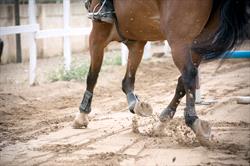Bob Judd, DVM, DABVP (Equine Medicine), DABVP (Canine and Feline Practice)
AdobeStock_174605305.jpeg

Hoof problems are very common in horses, and many of these require radiographs to treat correctly. Most farriers do a great job, but regardless of their ability, they cannot see inside the hoof capsule without an X-ray.
Farriers are often asked to treat conditions that are suspected to have or have been previously diagnosed with a condition that is impossible to treat correctly without X-rays. Without X-rays, you are requiring your farrier to guess at the sole depth and the location and conformation of the coffin bone. It is impossible to know how long to trim the toe and how to trim the hoof to align the coffin bone properly without knowing these parameters.
Not every horse needs radiographs prior to being trimmed. However, if your horse has a foot problem, X-rays can help the farrier do a better job. X-rays are critical in a horse with laminitis (or founder). In this disease, the coffin bone inside the hoof wall moves, so the trim cannot be performed correctly without knowing the location of the bone.
Some farriers may try to treat these cases without X-rays, possibly because owners do not want to spend the money. However, this is an example where your horse will suffer without X-rays regardless of the experience or skill of your farrier.
Many horses with laminitis have thin soles. The thickness of the sole must be known to trim and shoe the horse correctly. Correct trimming is the basis of the treatment of laminitis, so baseline X-rays are needed. In chronic cases of laminitis, horses should be rechecked in 3-6 months to make sure the trimming is correct.
X-rays can be helpful in trimming horses without hoof problems as well since many horses’ toes are not trimmed short enough by farriers. X-rays pinpoint the exact location for trimming the toe.